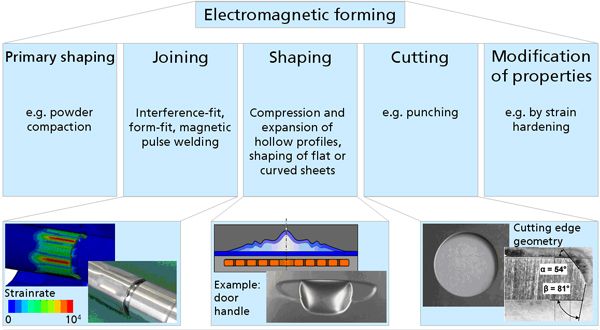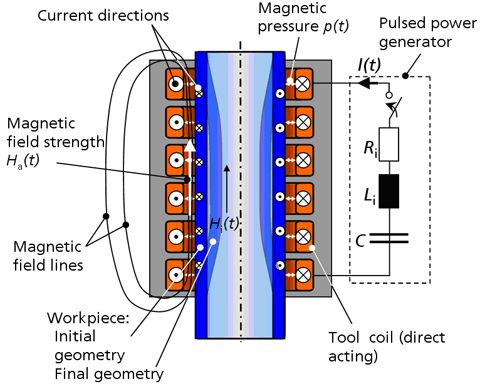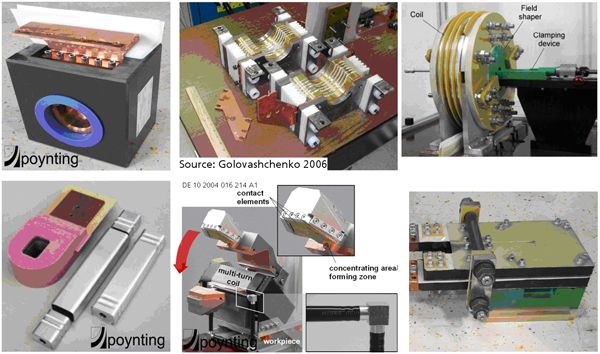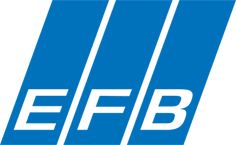General Description: Brief Introduction to Electromagnetic Forming
EMF is a comparably new and attractive technology, which is especially promising for joining / welding, forming and cutting of tubular or sheet metal components.

Figure 1: Overview of application fields and examples of the electromagnetic forming technology. (© Fraunhofer IWU)
The EMF technology is based on the utilisation of current driven electromagnetic forces (Lorentz forces) acting on the workpiece. The force application is contact free and no working media or lubrication is required, so that any disturbance of the surface due to wear is avoided and the cleaning effort during production is minimized.
In principle the three major process variants are differentiated:
- Electromagnetic compression of tubes or hollow profiles by a typically cylindrical coil surrounding the workpiece,
- Electromagnetic expansion of tubes or hollow profiles by a typically cylindrical coil positioned inside the workpiece, and
- Electromagnetic forming of flat of three-dimensionally preformed sheets by an accordingly shaped coil

Figure 2: Sketch of a typical setup of a tube compression process. (© Fraunhofer IWU)
Electromagnetic forming technologies offer attractive possibilities for
- obtaining increased formability for numerous materials, in comparison to conventional forming, while avoiding some important disadvantages of the conventional processes,
- fast and cost-effective joining of conventionally non-weldable materials, like heterogeneous joints;
- creating complex or new workpieces and products, not feasible by conventional technologies,
- improving the working conditions of the welder or operator, since the EMF technology is environmentally clean (no heat, lubricant, fumes, shielding gases, radiation, ...).
Critical components of the technology are the coils, which are mostly application-specifically designed.

Figure 3: Examples of tool coils for different applications.
When inappropriately designed or constructed, coil lifetime is very limited and/or low process efficiency is obtained. Durable, robust and efficient coil systems are however essential for a successful implementation of EMF in industry. Robust and efficient coils which can resist magnetic fields above 20 T have been problematic. Moreover, robust coils, able to withstand the process forces and temperature cycles, possess usually a low efficiency. Up to now only very little independent application-oriented research has been carried out regarding the design and construction of EMPT coils for industrial applications.
Currently, the know-how about such design concepts is based on the individual experience of the component suppliers. There is no gathered collection of this information available for the manufacturing industry. This is one important reason why industrial breakthrough of electromagnetic forming has not yet been reached.

